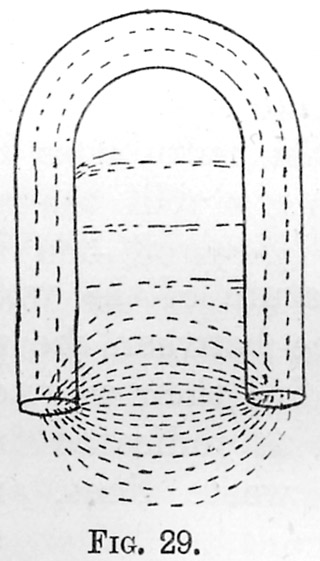The interaction between plasmas and magnetic fields

Reference is first Principles of Electrical Engineering by C. H. W. Biggs about 1890
Some photos added by K1 UGM
Suppose Fig. 25 to represent a
portion of wire forming part of a conductive circuit
through which a current is passing. If we take a sheet.
of paper or glass, and lightly sprinkle iron filings upon
the plate of glass we shall find that the filings will
arrange themselves somewhat concentrically around
the wire—that is, we find some force acting upon the
filings, causing them to assume the ring shape.

We may say that the position of each ring of filings iss
determined by a force acting in a certain direction, or
forces acting in certain directions. It is clear that
the force or forces start somehow from the conductor,
total space through which the lines of force act as the "field of force."

An example of this force is shown below
Substituting an arc discharge for the wire and bringing a magnet
close to it, distorts the
magnetic field lines on one side of the discharge
more than the other thus forcing the discharge closer to one side of
the
arc tube than the other. Its an interesting demonstration of
the very powerful
interaction between plasmas and the surrounding magnetic fields
It should be remembered that these plasmas generate magnetic fields of their own

Magnetic Circuit.
Around Horseshoe Magnet
The longer the air space to be
traversed by the lines of force
the greater the resistance, so for most practical purposes the
iron or steel
part of the
circuit is bent so as to bring the ends or
poles as near
together as possible and reduce the air

FIG. 29..
space to be traversed by the lines of force. Fig. 29
shows an ordinary form of magnet.